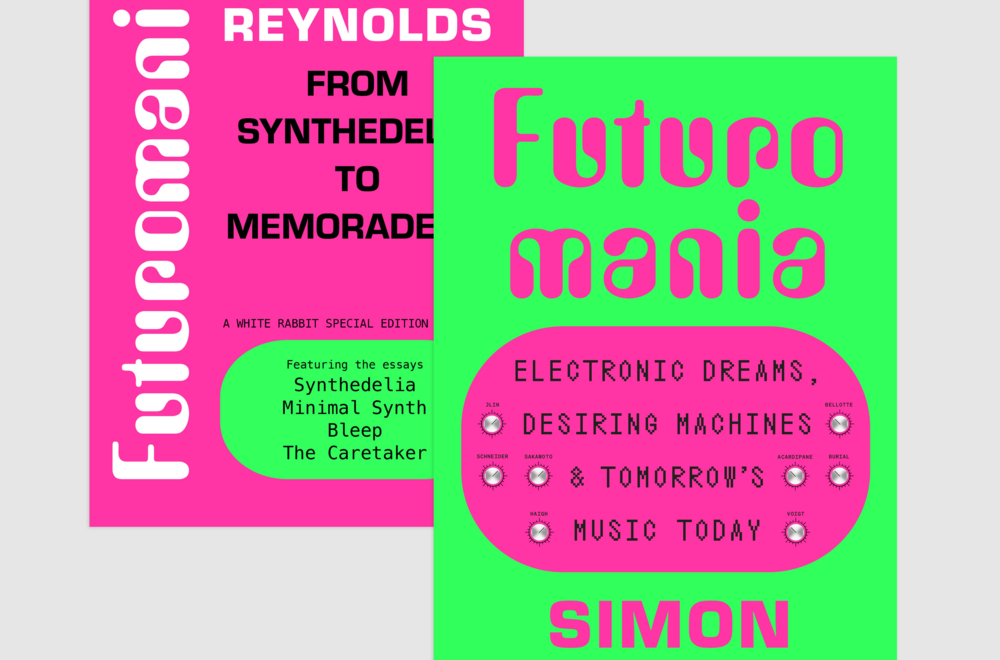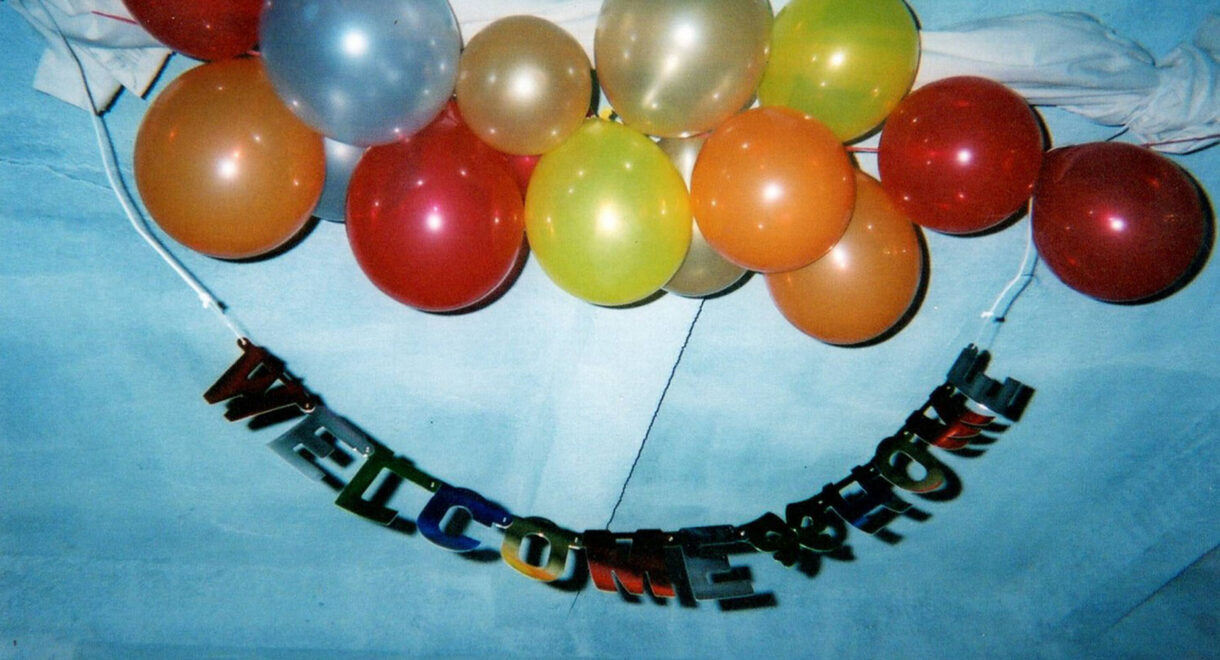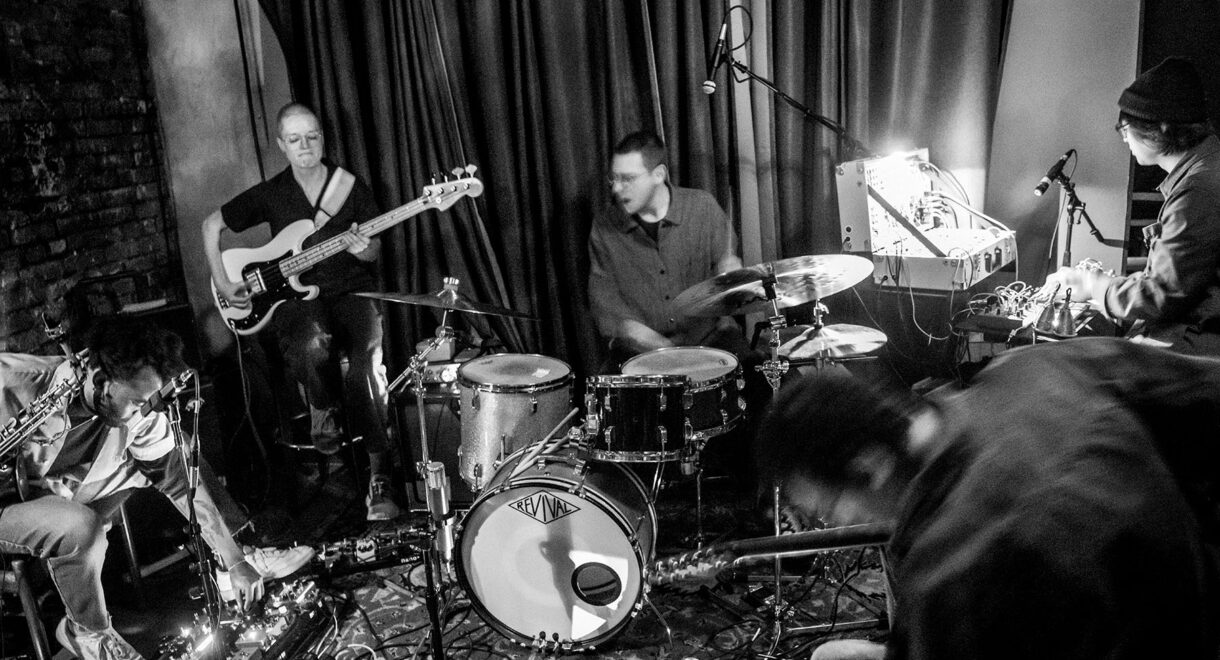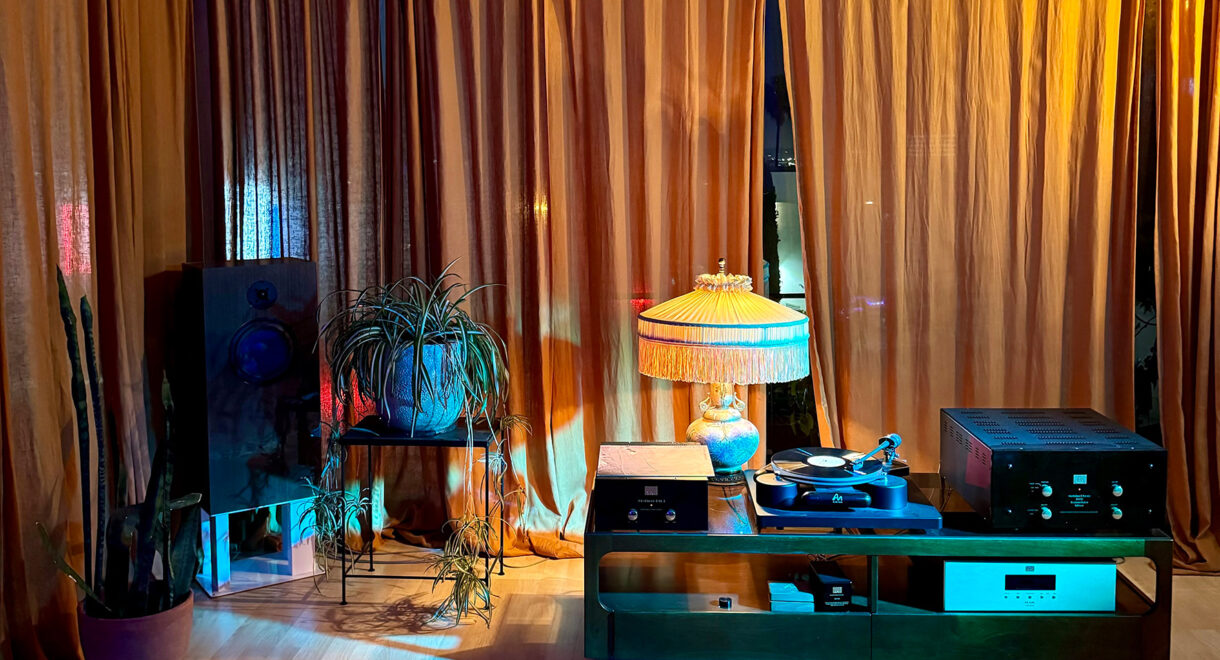The summer is halfway over and you’ve been scrolling for like, what, six weeks straight now? Step away from your phone (after reading this, of course). An analog […]
Future Times with Lifted’s Max D and Matt Papich

John Jones chats with Lifted’s Andrew Field-Pickering (Max D) and Matt Papich.
Lifted is an ever-shifting music ensemble anchored by their two founding members, Andrew Field-Pickering (Max D) and Matt Papich. Over the past seven years, they’ve released three full-length albums including a string of EP’s leading up to the latest album, 3. Theirs is not an easily definable sound. Upon first listen you can point to such genre flags as jazz, ambient, or club music, but these classifiers don’t coalesce in a way that makes the music any more discernible. Something lies hidden in the cracks that makes each repeated listen more engaging than the last.
A few crucial ingredients help define the group as the unique musical entity that it is, possibly the most important is the cast of players that float in and out of Lifted’s orbit. Joe Williams (Motion Graphics) and Jeremy Hyman are essential members making appearances on all the albums and remain prominent figures in the studio. Past and current contributors include Jordan GCZ, Gigi Masin, Jonny Nash, Josh Levi, Aya (Bassist of OOIOO), Will Dimaggio, Dustin Wong, Bass Clef, Beatrice Dillon, Repetentes 2008, Dawit Eklund, Mezey, Jacob Long (Earthen Sea), Martin Kasey, Luke Stewart, and Hirama. All heavyweights in their respective musical worlds.
1, 2, and 3 feel expertly crafted and carefully considered, yet remarkably playful and loose. This volley between opposing forces feels vital to the delicate balance that makes the music so unique. Acoustic vs. digital, lush vs. austere, formal vs. baggy: the duality in play is what squeezes the fruit. Ultimately, though, Matt and Andrew are designers as much as they are musicians. It’s as if the music was created to elevate experiences; whether that be a surreal dinner party or a stoned hike through nature, the music wants your endeavor to be… uhh well… Lifted.
3 will be fully released on February 18th, so as an old friend/DMV ex-pat I thought I’d check in and send over a few questions. Matt and Andrew met in Baltimore and recorded the conversation below. It has been edited for length and clarity.
I'd like to start at the beginning and ask how Lifted got off the ground. Did you have specific reference points when establishing the project or was it more of an organic process?
Matt: We definitely started talking a lot about Vladislav Delay’s Four Quarters.
Andrew: Yeah. And recording style, maybe to get ideas of doing it. I didn’t do much in a real studio at that point. And then we got up with Craig (Bowen), because we had an idea of finding a place to record live stuff or – talking about ECM – for “good room sound.”
Matt: There was ECM and Vladislav Delay as our first reference points, but I also remember at that first studio session, we didn’t make anything that sounded remotely like either of those things.
Andrew: The second or third session was with Joe and it was really frenetic.

In your press release for the album 2 you mentioned, “We tried to cultivate the sound using the studio as a primary tool, almost a member of the group in a way.” With the new album do you feel like the studio was as integral? Are there new themes or points of focus this time around?
Matt: I would say the studio was a little different this time, especially because we did so much of it at the Future Times studio in DC.
Andrew: Yeah. For the first two albums. It was 100% a band-in-a-studio approach. Record everything, multitrack. I think we even talked about that on the first couple albums – like no beats that are straight ahead beats. 3 has all sorts of beat tracks on it.
Matt: Almost all of this album started in DC didn’t it?
Andrew: A whole lot of it because it was at the FT Shop studio for that nine months it was around. I think summer 2019.
Matt: A lot of the beginnings got started in DC. But tracks like “Trip Tongue” came a little later. That was all just pulling in little bits that we had worked on separately, samples from people like Benny Mezey.
Andrew: Sometimes when we laid down a beat, we probably thought we were gonna have more people try to do a take on top of it, but we just ended up being really into the nuggets of stuff – “Macarena” and “Bobby V” and whatnot.
Matt: Tracks like “Chefs” and “Whipped Cream” are a new theme, more of a collage with soundtrack elements, like you’re watching or listening to a movie feeling.
Andrew: Those songs are a lot more about dropping in collected sounds and little bits of audio we each had around.
Matt: With those two tracks, and also “Born in the Roof”, we went with that idea that you’re a ‘fly on the wall’ in whatever situation. It feels like you’re at a party a little bit. But “Chefs” it’s like you’re at some sort of …
Andrew: Bar, yeah, like a bustling room.
Matt: A bustling nightclub or something.
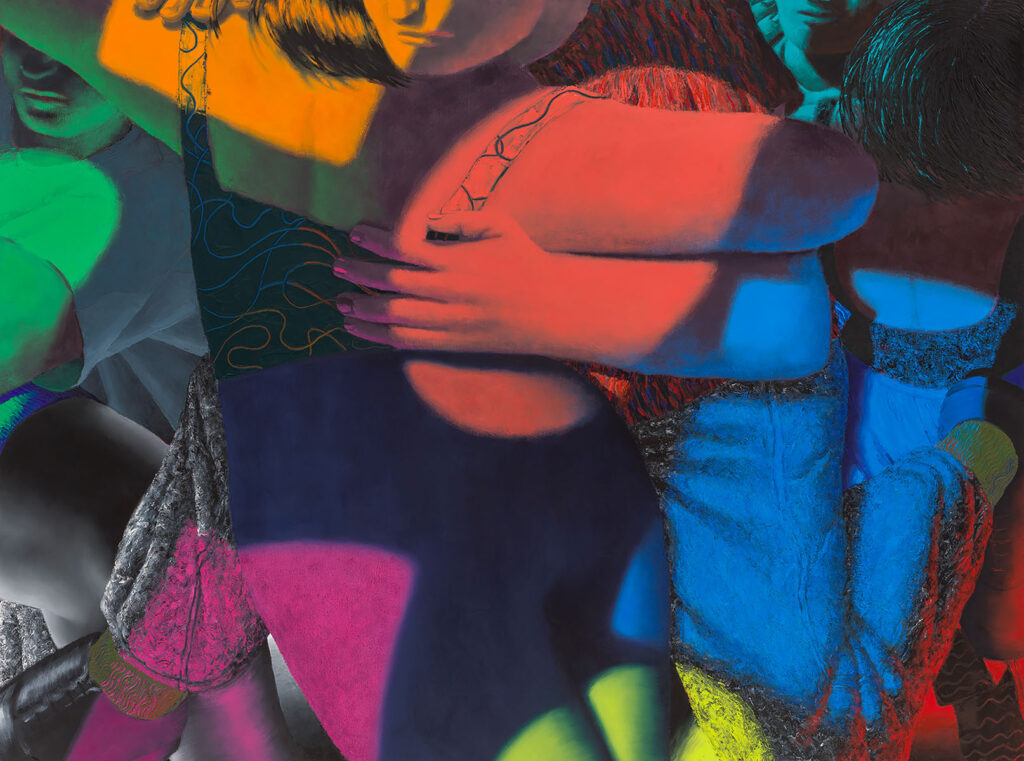
What's your process like working with musicians that you can’t interact with in person?
Andrew: Well, we interacted with Luke Stewart in person. That was sweet. He was around DC – he travels to play in many ensembles/places – and came up to Tempo House to record the bass. But Jordan is dialed in from afar.
Matt: So much of it’s just sending them the track, and knowing that someone like Jordan will send something good back.
Andrew: Jordan has so much ability to, without being in there, tap into such a good place with all the keys he’s played on Lifted tracks.
Matt: When you send stuff to people, are you like, “we’re thinking of this vibe,” or do you just send it?
Andrew: Well, we usually pick buds, right? For “Whipped Cream”, at the end, I felt like there was a sound I couldn’t identify, and something was missing, and I asked Josh Levi. I’ve seen him do an insane live set of tape spooling and cassette noise so I was just, “Run some of that shit on the track. Please.”
Matt: We’ll know what instrument we’re looking for and with someone like Dustin Wong we’re like, yeah, guitar.
Andrew: “Sounds like a good idea.” I haven’t made very many, or any, email asks about doing a take on Lifted stuff if I didn’t have an exact sort of thing in mind.
Matt: Right, knowing the person and knowing that that person would deliver it, basically. It’s very much, “You’ve been selected because we know that whatever it is you do will be dope.”
Are there specific instruments or programs that you find yourself gravitating towards when working on new material?
Andrew: A lot of the percussion or drums on older albums was always pretty much Jeremy. But I did some stuff this time; we spliced it in. It was shit I had done with Mike Petillo at the Takoma studio (Tonal Park, in Maryland). For Lifted 3 we were often adding things to songs on purpose that were a specific sound, moreso than instruments being performed together.
Matt: I think I played almost only keys on this album. I played piano on “Chefs” and “Whipped Cream”… synth on “Macarena” and “Cymbecko.”
Andrew: A lot of 3 has sequences on it. There’s not much sequencing on the first two Lifted records that are purposeful. It’s more letting the SH101 do a part, like on “Blackpepper” (from 2). But this one has more designed beats. Laying it down in the studio. Tracks like “Bobby V” and “Macarena.”
Matt: And then also bringing in samples that Benny had made that felt like, “this is already the beginning of a Lifted track” type of thing. Just adding on top. Yeah. We start with a lot of preference for the sound itself, whether it’s a sample or it’s a synth. Like a commitment to the sound from the outset…
Andrew: Then we usually do a pile of improvising. We’ll make a nine-minute thing that we played around stuff and then mute a lot of it.
Matt: I mean, we worked on loops for hours. Tracks like “Born in the Roof,” we literally listened to it for six hours that first day we made it.
Andrew: The original version that I had in the car is 25 minutes. With the first two albums, a lot of the stuff is a take or overdub. The first 70% of it is a take playing together, and then getting people to play on top of it or muting stuff that didn’t work. But the nucleus of a track is always a take.
Matt: Lifted always has an element of “this was a performance that was captured”
Do you think the ECM dads of the world could get down with Lifted?
Matt: I actually do. I mean, some of the tracks are pretty much on style.
Andrew: Some of them, especially since COVID. I already liked ECM records, but there’s thousands of ECM records. There’s some weirdo shit on there. There’s crazy newer ECM stuff with full-blown six people playing noise on laptops. I didn’t really know that until the pandemic.
Matt: I used to always go for the Nordic jazz stuff that ECM puts out. There’s so much. Trumpeter Tomasz Stanko’s ECM records are amazing.
Andrew: That’s the thing about ECM. I don’t always know the music that goes with who you’re talking about. I’ve seen their names in that ‘ECM’ font but I haven’t checked most of it. It’s a deep world. ECM has a sound, but other labels are also ECM-y to me. It’s jazz recorded extremely well in a room. In all its permutations, “that sounds like a room”….
Matt: All that ECM stuff is using a lot of silence – perfect silence.
Andrew: Just shit that sounds really good. Coming from making techno and house songs, that is super appealing. You never have that atmosphere in house tracks.
Matt: My favorite new shit on ECM – or newish – is that band Food.
Andrew: You sent me some stuff with Fennesz that sounds a lot like Lifted.
Andrew: Most of them are cool. I recently really got into the Double Image’s Dawn, which is so nuts. It’s one of the older ones, maybe the late ‘70s or the ‘80s. It’s all vibraphone people.
Matt: The ECM record I’ve listened to the most over the years is Keith Jarrett, Live in….
Andrew: Cologne?
Matt: Yes, The Köln Concert.
Andrew: I’ve been saving that one. I’ll save records once in a while. I know it’s gonna be ill when I check it.
Matt: That’s one of those. It’s just him on piano, but he’s vocalizing a lot and it’s all great.
Andrew: I used to watch a lot of YouTubes with Jack DeJohnette.
Matt: I saw Keith Jarrett live one time in Philly with Jack DeJohnette and Gary Peacock. I didn’t know how nuts it was gonna be. I was in college. I looked it up – April 7th, 2004.
Andrew: The Terye Rypdal Miroslav DeJohnette stuff is killer. That dude Vitous is a beast. There’s one Vitous album called Purple. It’s got a little more funk to it.
Matt: So many records. I would love to see them all lined up.
Andrew: There’s an ECM book that costs like $400 USD now that I want so bad. It’s just all the covers.
Andrew, you live in DC, and Matt you’re in Baltimore. The two cities are basically less than an hour away from one another but have two very distinct auras / cultural histories. Do you feel like making music in these locations alters the outcome of what you’re producing? If so, what does each city’s vibe bring to the table?
Matt: I never really thought about it that way, but I do. The fact that we worked in DC for a lot of this album, at your little Future Time studio, it did influence the sound on this.
Andrew: You could answer 20 ways. I come up here all the time, especially now. And I think in the 90s, early 2000s when I was a young kid going to gigs, there was way more of a DC vs Baltimore thing, people not f–ing with one another, people not wanting to travel to the other place. But it hasn’t been like that for a while, to me.
I do think you’re right about the studio thing. When it was in the DC studio, there was a little more dance music seeping in. I mean, it was at my dance music record shop.
Matt: Right. The people that came through were often house or techno people. I remember Jackson (from Superabundance and Rush Plus) being in there one day before we got started, and Davon (Dreamcastmoe) would come through.
Andrew: Yeah, Davon came through. There’s things we produced for him at the same time, right? The Lifted stuff we made there was a little more like what the shop was selling. Funky electronic music, you know?
Matt: Yeah, I do think so. And to me, it’s like in DC, we know more people that are in the dance music world there. Where in Baltimore, so many of the people we know are part of experimental music scenes.
Andrew: In DC, the friend group is way more like house music and Baltimore it’s more experimental shows and going into warehouses and seeing different, equally cool music.
Matt: It’s only in the past couple years that there’s another level of the dance music scene in Baltimore that’s not Deep Sugar and the classic House heads.
Andrew: Right? That was always there and always doing its thing. At one point I did flyers for Lisa (Moody, from Deep Sugar, RIP) but a lot of my friends in Bmore were more going to or putting on experimental shows.
Matt: And the Four Hours of Funk party ran forever in a similar way
Andrew: DC house music people were coming up to Baltimore a lot for things, like going to Paradox. DC is more an electronic music scene. The vibe is way more funky – 12-inch music and stuff.
Do either of you have a favorite Lifted track? If so, what about it does it for you?
Matt: I mean, I really like “Born in the Roof.” I think that’s this crazy, cinematic.
Andrew: Yeah, I think we moved into a weird place there, which is cool. I can’t even believe I was doing all that talking haha. Such a weird collected bit of music.
Matt: I also really like the last track on 2 – what was it called? “Now More Than Ever”?
Andrew: That’s the first one, 2. That last one is “Near Future.”
Matt: “Near Future”, with Joe’s beautiful piano playing and that crazy dub baseline.
Andrew: Joe and Jeremy took the thing to the ending line. It’s so crazy. And I really like “Mirror in my Room” and “Bell Slide” from 1 a whole lot.
Matt: “Bell Slide” is such an insane track. Also the one on 1 that Gigi plays on.
Andrew: The last time I listened to 1, it had been a while. I was really like, damn, I can’t believe we made this. It’s so weird.
Matt: I agree. I hadn’t listened to it for years. And I listened to it at some point over the summer. I was just like, whoa, we’ve come a long way. It’s very skeletal compared to our newest stuff, I think.
Andrew: Yeah. It was surreal. The way we make music, we don’t play live shows or practice songs. It gets pretty separated from your muscle memory. It’s more, ‘We did that? What were we doing?’ I love that feeling: Surprising yourself – but you did it in the first place.
Matt: With Lifted, even with stuff that we’re working on currently, I’ll be like, ‘Did I play that?’ That’s partly why we do those extra credits – to really break down the instrumentation for both us and for everyone else. But it’s nice to have that history because it’s such an organic process. It’s easy to be like, ‘Who made that bassline?’
Andrew: There are things that, straight up, I do not remember if it’s a real guitar or not a real guitar.
Matt: That’s definitely been a long-term Lifted theme, actually. That also intersects with what Joe’s always been interested in, it’s not like it’s impossible jazz or something, but it blurs things where you’re like, ‘Was that a real instrument? Is that synthetic?’ blurring that line…
Andrew: We get away with a lot on the feel of the tracks because we make that initial blob that’s live, but we’re cutting so much stuff away. We won’t really loop as much mute and cut away sound, so it feels right. The same live feel happens, right? But it’s adorned with all these other takes and things.
And what's next for Lifted?
Matt: We’re back in the studio and we already started on new stuff.
Andrew: Blows my mind Lifted has been around since like, 2014.
Matt: Yeah, it’s 2013, or I think 2013 was the beginning.
Andrew: Almost 10 years, which is crazy. doesn’t feel like that at all. We never played a gig, but we make this stuff together. But because you’re not playing gigs, or no one’s presenting a song to the other members to be like, ‘Let’s do this song, I wrote lyrics, I have a Part B and Part C. It feels like a really nebulous thing.
Matt: It’s just ongoing. I think for the next one – we talked a lot while we were making 3 about ideas for 4 when we talked about wrapping in some of those cinematic concepts.
Andrew: Yeah. At a certain point, you feel like a chunk of the songs are done together. And then you’re like, ‘There’s this next thing.’ We’ll think about the next thing while we’re in the middle of the previous album.
Matt: I think that “Chefs” and “Whipped Cream” showed maybe a new path for some of the sound. I like that we started using loopy stuff more. I want to play with the world of loopiness, and I want to think about how dub could be a part of our sound too.
Andrew: Yeah, I mean, there were never any rules really steadfast in the first place or anything. It’s all going to work.
Matt: Sweet.




